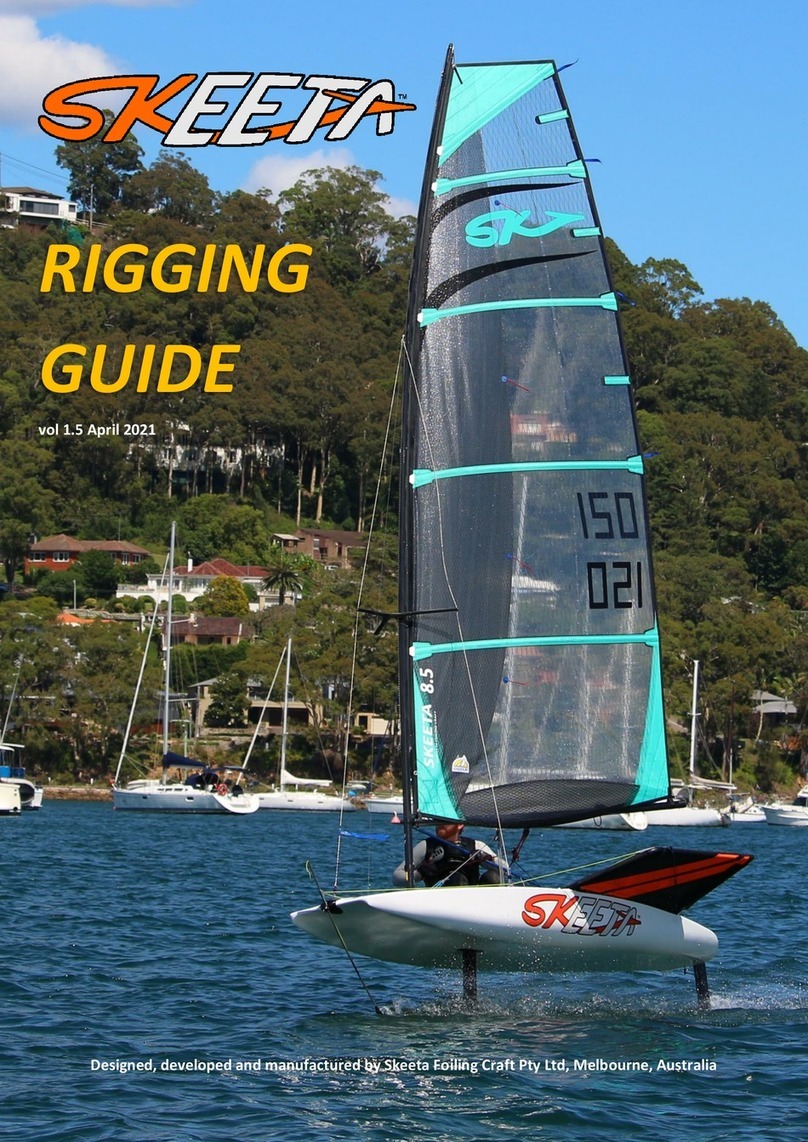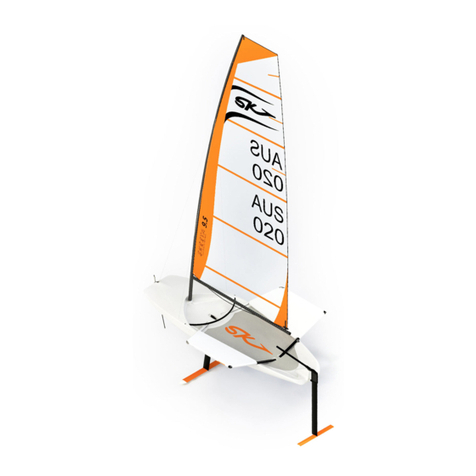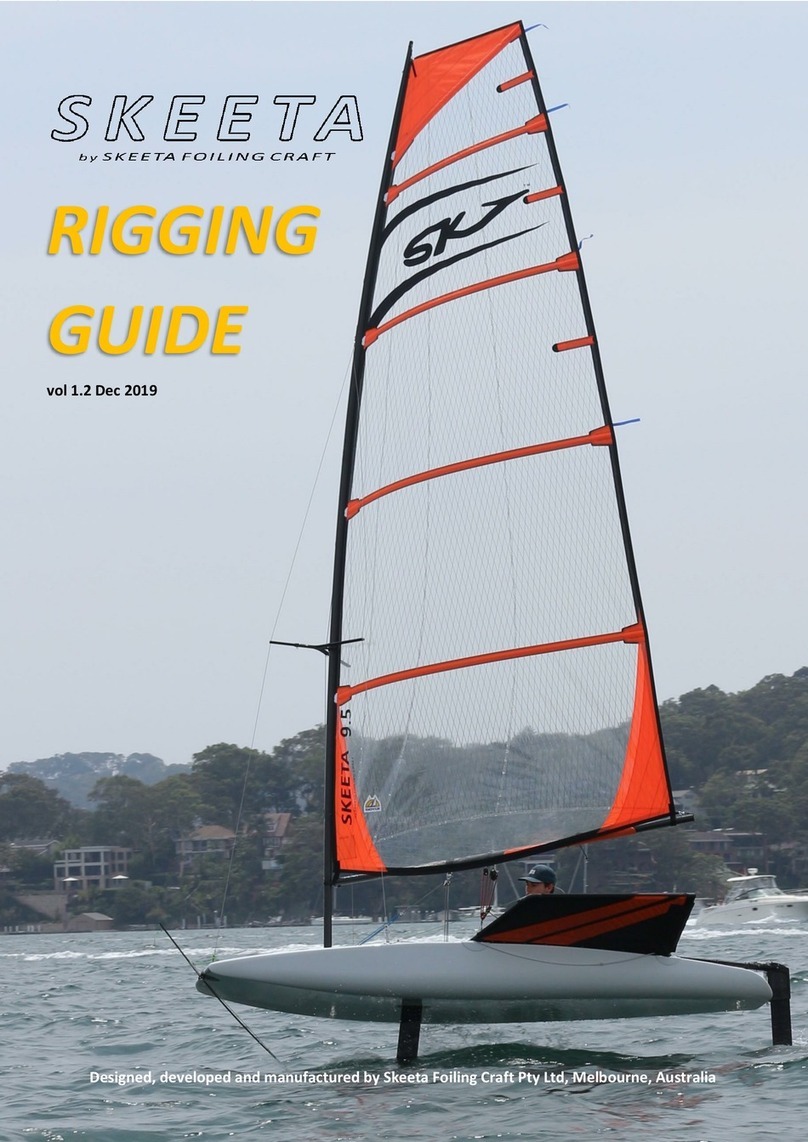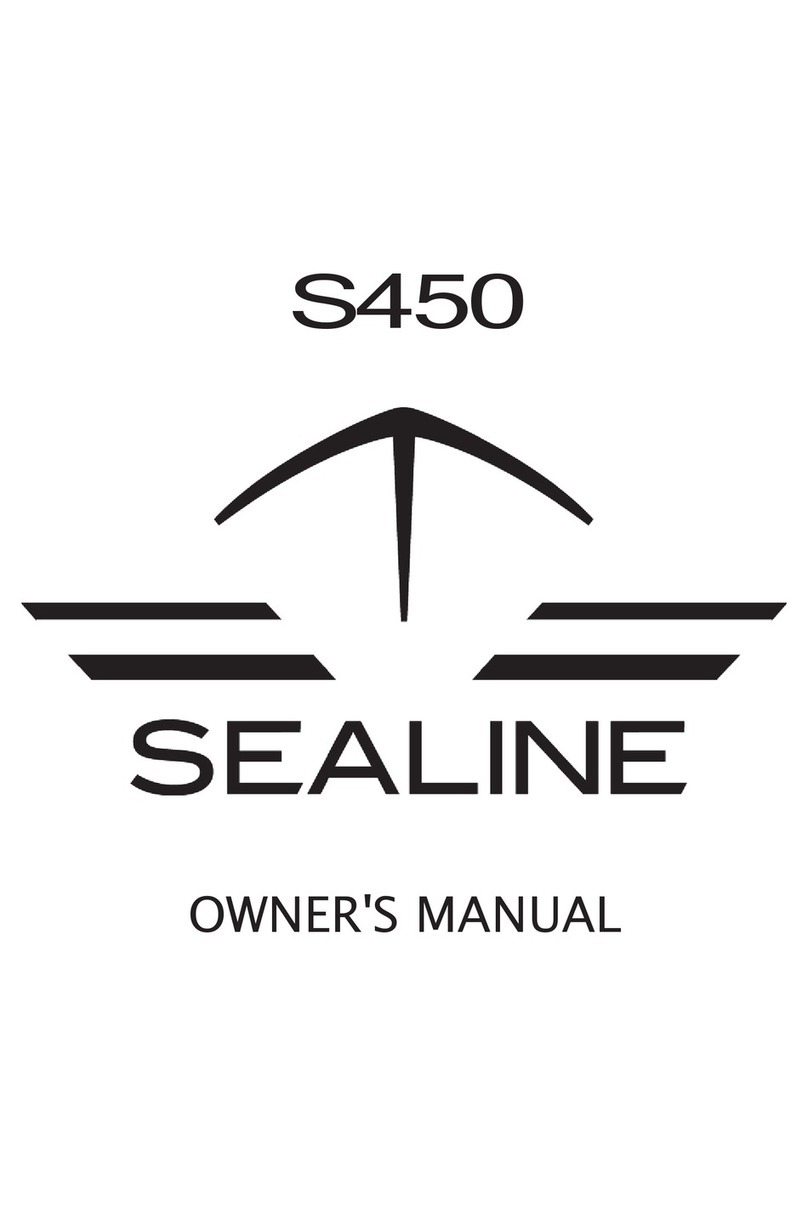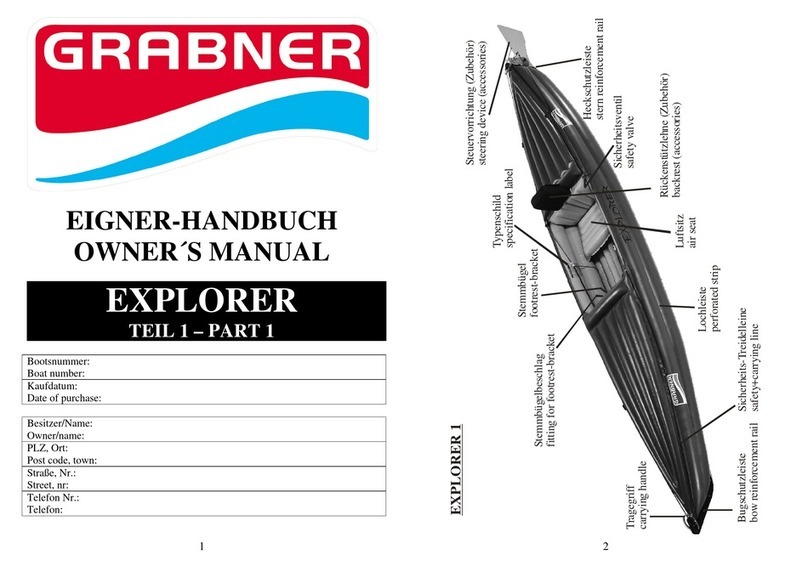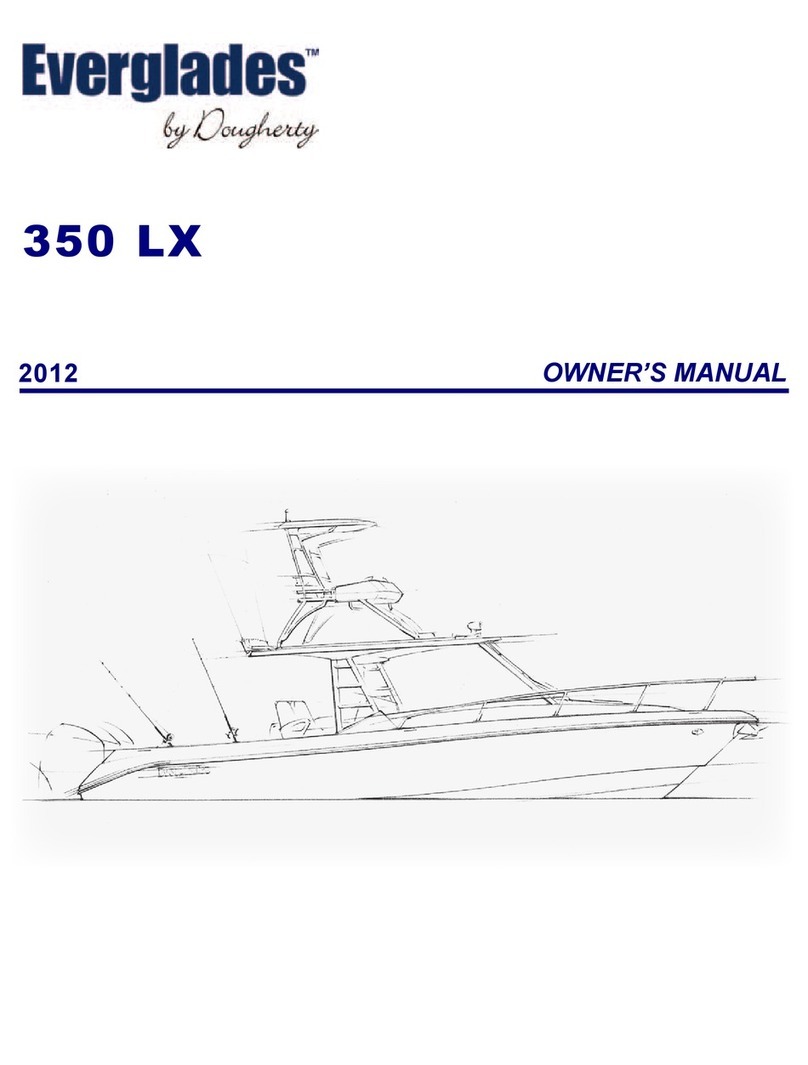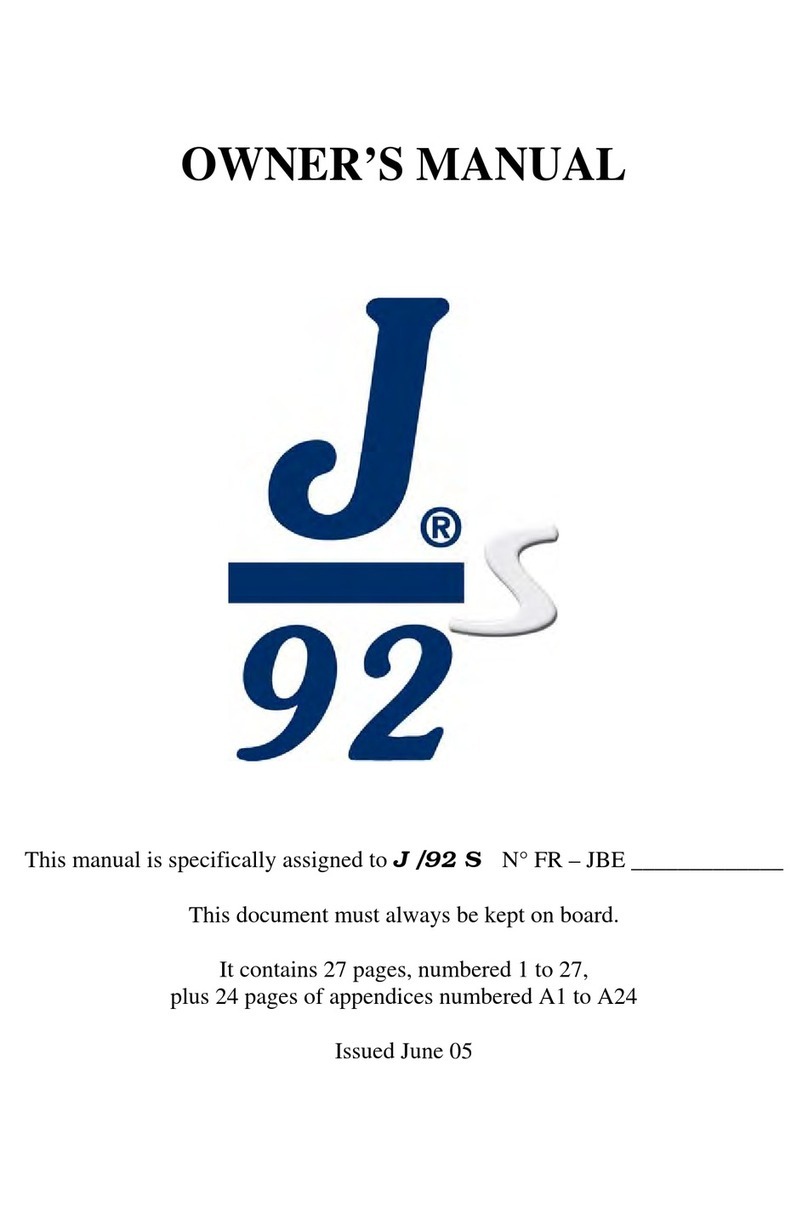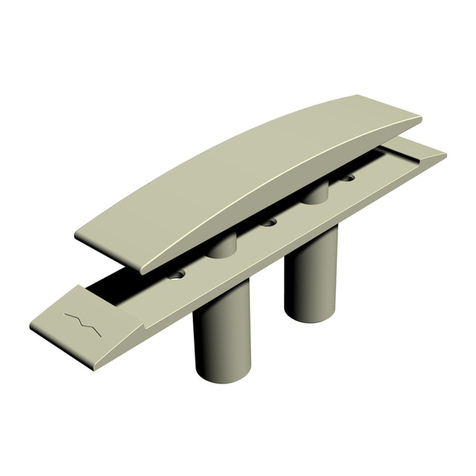SKEETA FOILING CRAFT Nikki 5.5 Quick start guide

RIGGING
GUIDE
vol 1.2 Oct 2019
Designed, developed and manufactured by Skeeta Foiling Craft Pty Ltd, Melbourne, Australia


1
SFC_Nikki_Rigging_Guide_vol 1.2_Oct 2019
Index
Introduction
2
Inspecting your new Nikki
2
Hull
3
Wings
4
Hiking Straps
6
Trolley
7
Mast
9
Sail
10
Sail numbers
12
Boom
12
Mainsheet
13
Outhaul
14
Vang system
14
Rudder Box/tiller
16
Rudder
17
Centreboard
-Displacement models
-Foiling models
-Attaching the pushrod
19
Wand - height sensor (foiling models)
21
Launching and leaving the shore
25
Returning to shore and unrigging
25
Towing and anchoring
26
Maintenance
27
Warranty
28

2
SFC_Nikki_Rigging_Guide_vol 1.2_Oct 2019
Introduction
This rigging guide explains in detail how to rig your Nikki from the very beginning.
It is intended to provide you with details of how to rig the boat ready for sailing.
It does not instruct you on how to sail, seek proper training and guidance prior to sailing Nikki.
Information on how to launch and sail, capsize recovery and safety precautions are contained in the
Operating Guide.
Inspecting your new Nikki
Check everything is in the package when delivered and first opened.
Immediately let your dealer know if any parts did not arrive.
Displacement Models
Foiling Models
Optional extras
1 x Nikki Hull in hull bag
1 x Nikki Hull in hull bag
1 x 5.5 m² or 6.5 m² mast base
2 x Wings
2 x Wings
1 x 5.5 m² sail or 6.5 m² sail
1 x Rudder box and tiller
1 x Rudder box and tiller
Padded wing bag
1 x Tiller extension
1 x Tiller extension
1 x 2-piece Carbon mast
1 x 2-piece Carbon mast
1 x Sail
1 x Sail
1 x Boom assembly
1 x Boom assembly
1 x Centreboard and rudder
1 x Centreboard and rudder
1 x Centreboard and rudder
horizontal lifting foil
2 x Displacement foil insert
1 x Wand and wand tube

3
SFC_Nikki_Rigging_Guide_vol 1.2_Oct 2019
Hull
The hull is custom built from a solid foam core with a durable epoxy glass skin. The hull is very unlikely to
leak or sink, and there are no inspection hatches or drain plugs. All fittings have been attached from factory.
It comes in its very own boat bag. EVA foam is applied to the deck for comfort and grip.
The handle at the bow is made for lifting the bow of the boat.
Do not paint, vinyl wrap or heavily sticker the hull in dark colours, as overheating may cause damage to the
hull.
EVA foam cockpit floor Handle for lifting bow
WARNING:
DO NOT cover up the air valve located on the bulkhead.
This hole needs to breathe, covering this will void warranty.
CARE:
Never leave your boat in damp conditions. For example, in a damp bag.
The hull is made to be reasonably lightweight for foiling.
On land, do not sit on the hull, or put weight on, as this may create dents.

4
SFC_Nikki_Rigging_Guide_vol 1.2_Oct 2019
Wings
The port and starboard wings are provided with trampoline covers already laced up.
1. Simply slide the font wing bar into the hole.
2. Lower the rear bar into position and push the bar over the inner pin.
3. The outer pin will sit inside the hole on the moulding attached to the rear bar. Push the retaining pin
in place.
The wings are strong, the front wing bar can be used for lifting the boat.

5
SFC_Nikki_Rigging_Guide_vol 1.2_Oct 2019
The righting rope, is used when capsized, is lead under the wings.
To remove wings: Undo the retaining fast pin, pull the rear wing bar out (1) and away from the hull. When
clear of the 2 attachment pins, lift the rear wing bar upwards (2). Then slide the front of the wing outwards
and away from the hull (3) –the wing should come away easily.
The wing covers are supplied fully assembled, laced together with cable ties. Should the covers need
replacing, these ties are easy to cut off and replaced. Only use UV stable Nylon with 20Kg breaking load.
The underside of the wing covers have orange stripes to help make the boat more easily visible when
capsized.
1
2
3

6
SFC_Nikki_Rigging_Guide_vol 1.2_Oct 2019
Hiking straps
Hiking straps are attached to the boat. They are placed over the front wing bar so you can easily get your
feet under. The straps sit under the rear wing bar so that the wings are easy to attach and remove.
There are 3 different hiking strap positions. Rope is provided so you can adjust the front of the straps to suit
your personal preference.
WARNING:
When changing the rear strap position, be sure to ONLY use the screws provided.
DO NOT use power tools to screw these in –they must ONLY be screwed in by hand.
Ensure the correct Phillips head type to fit the screw.

7
SFC_Nikki_Rigging_Guide_vol 1.2_Oct 2019
Trolley
The flat pack trolley is quickly and easily assembled with spring clips.
1. To join the trolley centre bar and the trolley rear bar together, push the spring clip in and insert the
centre bar into the square tube on the trolley rear bar. The spring clip will click into the hole.
2. To insert the axles, again push the spring clip in and insert the axle into the tube on the trolley rear
bar. The spring clip will click into the hole on the underneath side of the tube.
Repeat for opposite side.
3. To attach the wheels, place the wheels onto the axle, then place the washer over the axle. Insert
the linch pin into the hole on the outside of the axle.
4. To attach the centre t-bar, push the spring clip in and insert the t-bar into upstand on the trolley
centre bar. The spring clip will click into the hole.

8
SFC_Nikki_Rigging_Guide_vol 1.2_Oct 2019
5. Attach the handle by again, pushing the spring clip in and inserting it into the tube at the very front
of the trolley. The spring clip will click into the hole.
Nikki can be neatly stored on the trolley in her protective padded bag with all components inside.

9
SFC_Nikki_Rigging_Guide_vol 1.2_Oct 2019
Mast
The two-piece carbon mast is supplied with a halyard, halyard lock, a vang saddle, a plastic sleeve and a mast
base plug.
1. Push the spring clip in and slide the mast base and mast tip together, making sure the sail track aligns
and locking pin is engaged.
2. Make sure the mast hole is clear from any debris, then raise the mast and insert it into the mast hole.
Ensure the mast is locked into place with the mast lock pin.
To remove:
Pull the mast lock pin back and lift the mast up slightly, enough for the pin to clear the plastic mast sleeve.
You can now let go of the mast lock pin and lift the mast out with 2 hands.
The mast lock pin is there as a safety measure, so in the unlikely event of rigging or rope breakage, the
mast will not fall out.

10
SFC_Nikki_Rigging_Guide_vol 1.2_Oct 2019
Sail
The sail comes in its own bag with battens inserted, but not tightened. Use the allen key provided with the
sail to tension up the battens before hoisting the sail. The sail should have no wrinkles when rigged up with
the vang on.
1. Attach the halyard loop to the top of the sail.
2. Insert the head of the sail into the sail-feeder and feed the luff up the sail track on the back of the
mast.
3. When the sail is fully raised, insert the knot into the halyard lock on the front side of the mast.

11
SFC_Nikki_Rigging_Guide_vol 1.2_Oct 2019
To adjust the sail hoist height, position the knot along the cord within the locking ball.
4. Run the excess rope through the halyard keepers on the front of the mast and cleat the rope onto
the horn cleat near the base of the sail track. The remaining halyard rope can be stored in the sail
pocket.

12
SFC_Nikki_Rigging_Guide_vol 1.2_Oct 2019
Sail Numbers
Sail numbers are supplied with each sail. In the sail bag, there will be 6 x 230mm number 8’s.
The sail number is the same as the boats serial number located on the transom of the hull.
To achieve correct sail numbers relative to your boat, follow these steps.
1. Cut out the grey areas with a sharp pair of scissors
2. Place them on the sail parallel to the battens
•Numbers on the starboard side of the sail must be higher than
the port side.
•Place the numbers in the panel second from the foot of the sail
as shown.
•Position the numbers 45mm apart and to the edge of the sail.
Boom
The boom is a parallel aluminium section to which a yoke, vang loop, mainsheet loop, outhaul and orange
boom pad have been added.
Once the sail is up;
1. insert the outhaul end of the boom through the webbing loop on the clew of the sail.

13
SFC_Nikki_Rigging_Guide_vol 1.2_Oct 2019
2. Insert the yoke end into the webbing loop on the tack of the sail and clip the yoke onto the mast.
Ensure the webbing is positioned in front of the knob.
Mainsheet
The 4:1 mainsheet system is threaded through the pulleys provided as shown.
The mainsheet can always be left attached to the boat.
To connect to the boom;
Attach the double pulley hook onto the mainsheet boom
loop. Ensure the mainsheet is in the correct orientation and
not twisted.
The opening of the hook should face to the bow of the boat
TIP:
Once the boom is inserted into the loops,
you can roll the boom up with the sail when unrigging.

14
SFC_Nikki_Rigging_Guide_vol 1.2_Oct 2019
Outhaul
1. To attach the outhaul control, clip the hook onto the webbing loop on the clew of the sail.
2. On the topside of the boom there is a v-cleat, the rope passes through this and can be adjusted as
necessary.
Vang system
The Ward S-Vang lever system is unique to Nikki, with a 10:1 through to 50:1 continuously variable ratio.
For foiling it is very important to have a powerful vang which enables high leach tension to be applied.
1. Attach the snap shackle to the boom vang loop.

15
SFC_Nikki_Rigging_Guide_vol 1.2_Oct 2019
2. Attach the hook onto the mast saddle. Be sure to not twist or tangle up the ropes.
3. Attach the shock cord which supports the S-vang lever in an upright position.
The tether attached to the vang loop on top of the boom allows you to vary the ratio between luff and leech
pressure by moving the vang loop forwards and back. To adjust, undo one of the bowline knots on the tether,
adjust to required length and re-tie a bowline knot.

16
SFC_Nikki_Rigging_Guide_vol 1.2_Oct 2019
When the vang is applied, the luff is free to move down the mast, which applies both luff and leach tension
at the same time. This greatly simplifies the controls and gives more time to concentrate on sailing the boat.
Rudder box/tiller
The rudder box and tiller are a single unit.
1. Position the rudder box over both plates on the stern post of Nikki.
2. Insert the rudder pin and secure it with the ring provided.
3. The tiller extension clips into place.
For foiling, there is no adjustment of rake, or tiller twist grip control as this is not required with this foil
design.
4. Loop the shock-cord over the tiller and through the olive clip and tension as required.
Always make sure the shock cord across the rudder is loose as this helps the boat to round up if
you do go overboard.
TIP:
If you find it difficult to attach the vang, it can be easier to
attach the mainsheet first and apply pressure to the sail.
This will lower the boom and will allow the vang to be easily attached.

17
SFC_Nikki_Rigging_Guide_vol 1.2_Oct 2019
Rudder
1. Insert the rudder blade from above and apply the toggle clamp to hold it in place.
2. Attach the horizontal foil by aligning the pins and pushing it up into place.
Make sure the push button is fully engaged before going sailing. The button will sit flush on the
outside surface of the rudder.
3. Clamp the rudder in place using the toggle clamp.
WARNING:
DO NOT hold on to the tiller or tiller extension in the event of a capsize or falling overboard
as you may damage the boat, rudder box, tiller or tiller extension.

18
SFC_Nikki_Rigging_Guide_vol 1.2_Oct 2019
4. Insert the pull-down rope into the hole on the top of the rudder and tie a knot. The rudder is pulled
down into place after leaving the shore using this rope.
5. To lock the rudder into place, pull the retaining toggle pin over the top of the rudder and onto the
opposite side of the rudder box. Insert it through the rudder box and rudder hole. Make sure the
toggle pin nose drops to be engaged properly.
6. The excess rope can be inserted into the groove in the end of the tiller.
This manual suits for next models
1
Table of contents
Other SKEETA FOILING CRAFT Boat manuals
Popular Boat manuals by other brands
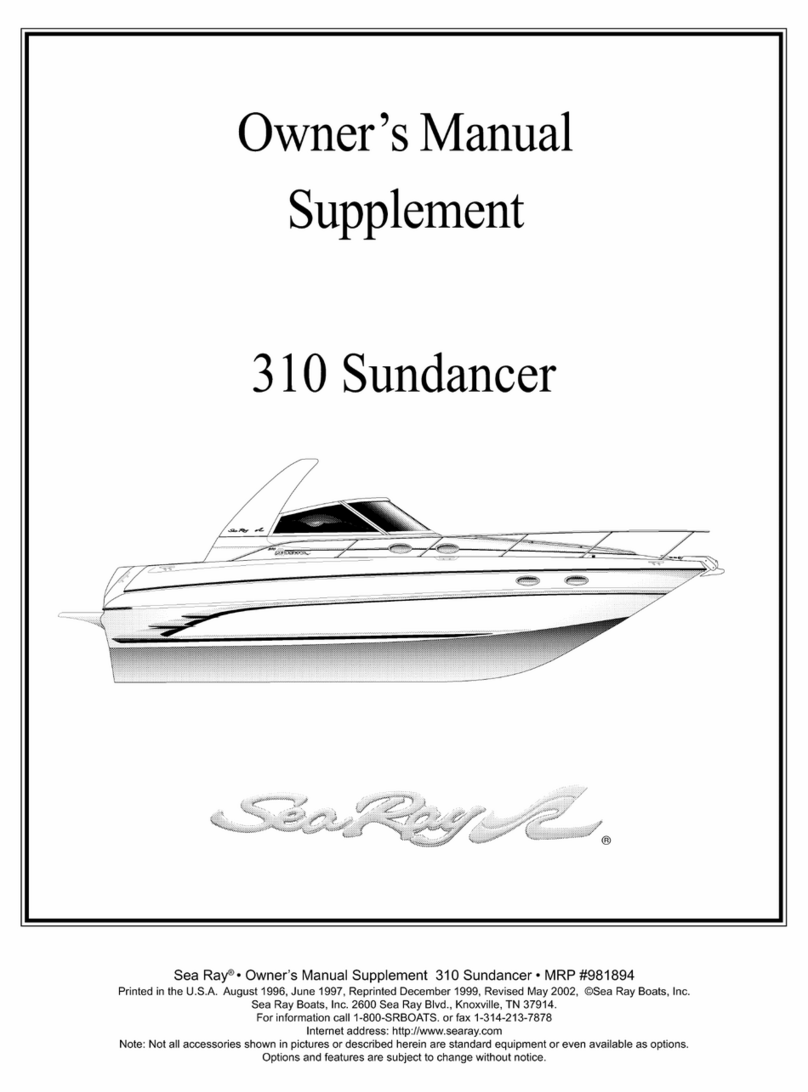
Sea Ray
Sea Ray 310 Sundancer Owner's manual supplement

NorthStar
NorthStar 220 CD - INFORMATION BOOKLET brochure

Bavaria
Bavaria 33 2008 Information & operation manual
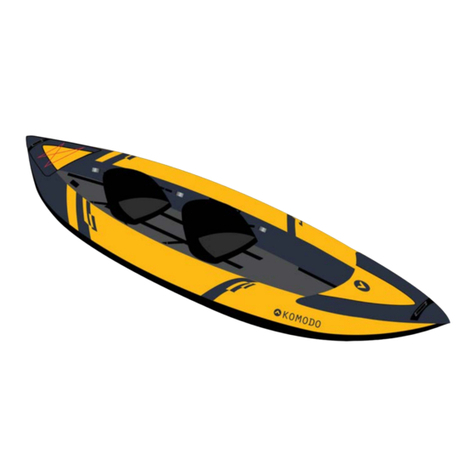
komodo
komodo KD2PCINFKYA user guide

Grady-White Boats
Grady-White Boats CANYON 366 owner's manual
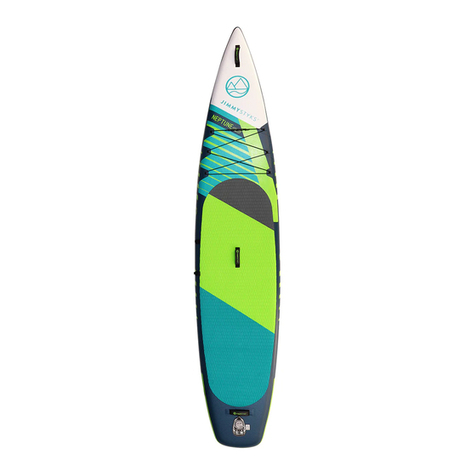
Jimmy Styks
Jimmy Styks NEPTUNE12.6 owner's guide
